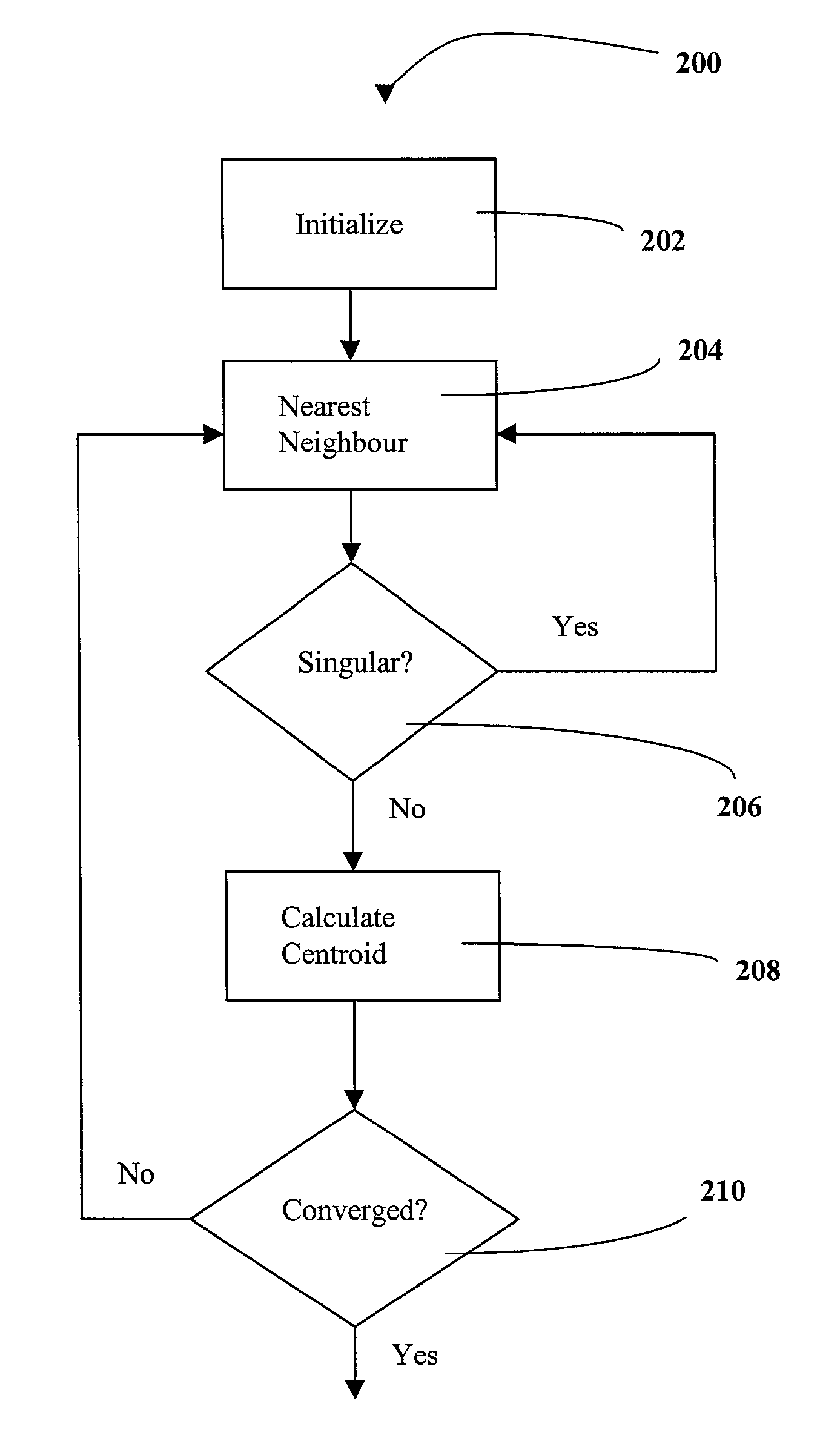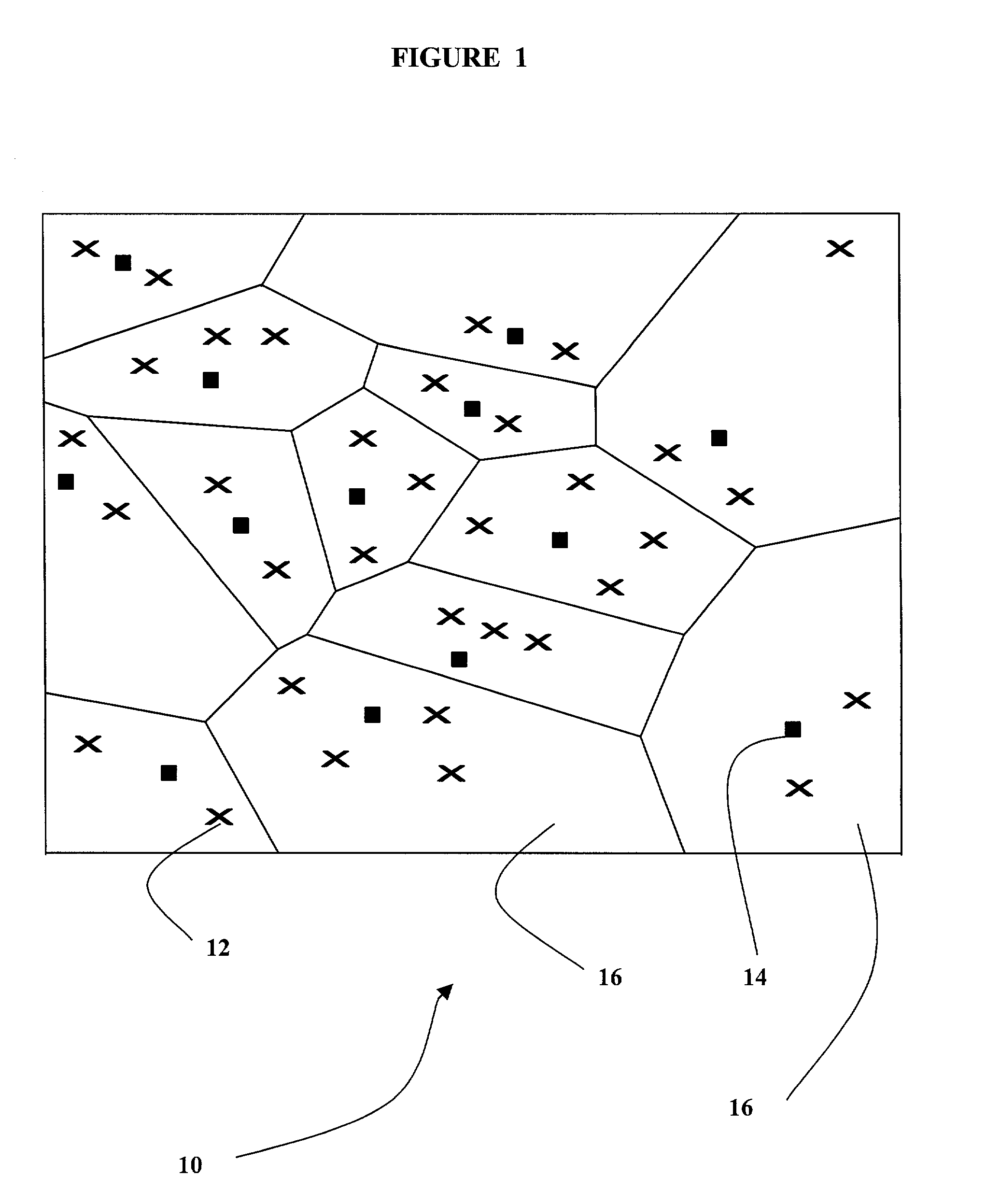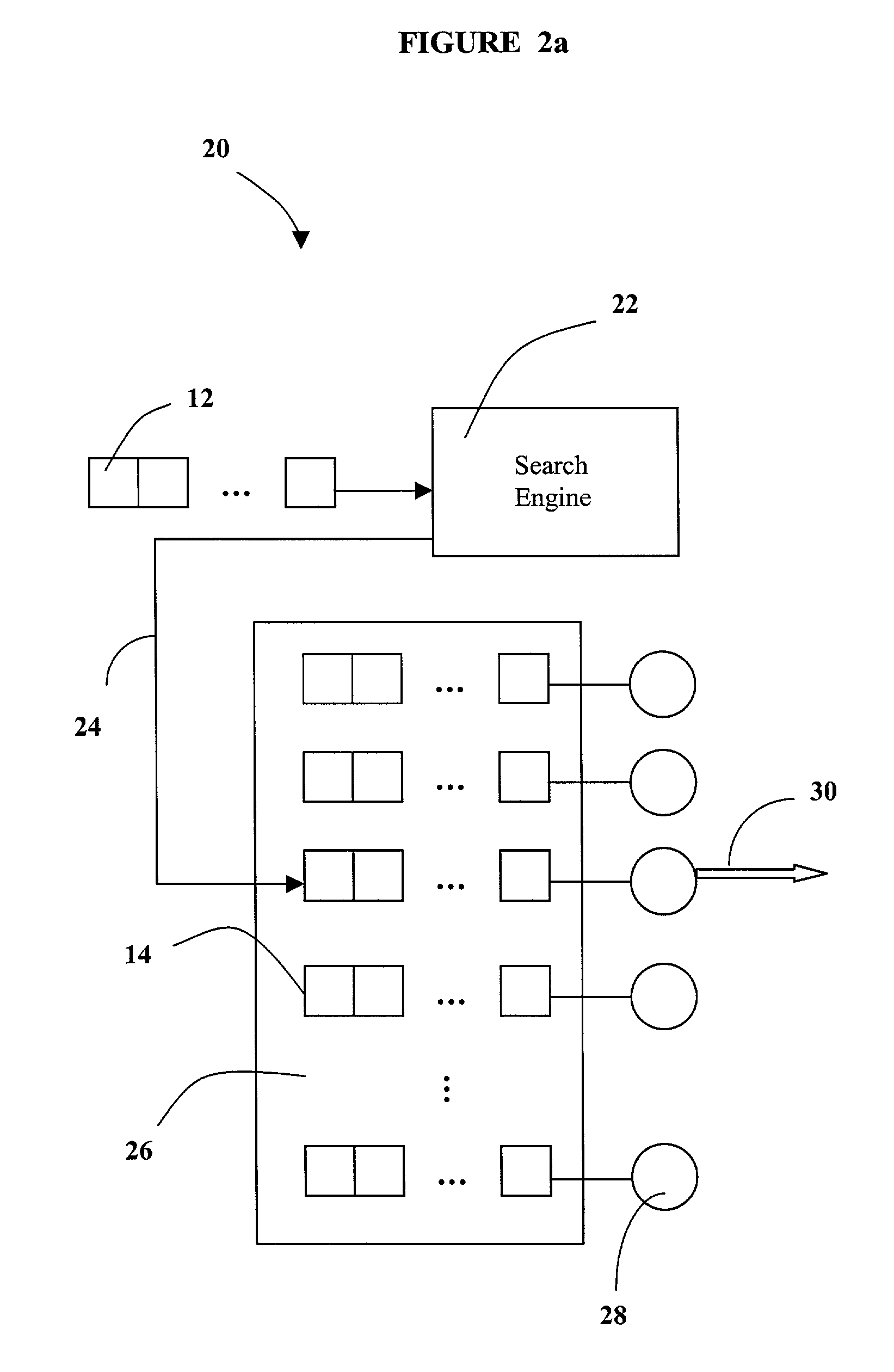System and method for reduced codebook vector quantization
a vector quantization and codebook technology, applied in the field of vector quantization, can solve problems such as the increase of net overall distortion, and achieve the effect of minimizing the content required
- Summary
- Abstract
- Description
- Claims
- Application Information
AI Technical Summary
Benefits of technology
Problems solved by technology
Method used
Image
Examples
Embodiment Construction
[0042]The present invention is directed toward a system and method of compressing image signals. Vector quantization is commonly used to compress image signals. Vector quantization takes as input a set of source vectors and calculates a smaller set of codevectors. These codevectors are then stored in a codebook. To better illustrate this concept, we refer now to FIG. 1.
[0043]FIG. 1 is a plan view of a set of source vectors and codevectors in a two dimensional space shown generally as 10. Source vectors 12 are represented by an “x” and codevectors 14 are represented by a solid block in FIG. 1. The two dimensional space 10 has been divided into a number of Voronoi regions 16, by a process well known in the art. Each region 16 will have a single codevector 14 which is stored in a codebook (FIG. 2). Codevector 14 is the nearest neighbour to the source vectors 12 contained within a region 16. The present invention is directed toward the determination of a set of optimal codevectors 14. F...
PUM
 Login to View More
Login to View More Abstract
Description
Claims
Application Information
 Login to View More
Login to View More - R&D
- Intellectual Property
- Life Sciences
- Materials
- Tech Scout
- Unparalleled Data Quality
- Higher Quality Content
- 60% Fewer Hallucinations
Browse by: Latest US Patents, China's latest patents, Technical Efficacy Thesaurus, Application Domain, Technology Topic, Popular Technical Reports.
© 2025 PatSnap. All rights reserved.Legal|Privacy policy|Modern Slavery Act Transparency Statement|Sitemap|About US| Contact US: help@patsnap.com



